The Most Mesmerizing Design Moments of Salone del Mobile
In case you missed it, put it in your calendar for 2020: Milan’s Salone del Mobile is a thoroughly dazzling affair, during which the whole city transforms into a bustling, inspirational, never-ending Wunderkammer. Behind every Palazzo gate, in every courtyard and gallery space, awaits a new revelation (and, usually, very Insta-worthy moment). Global tech companies compete for attention with world-renowned fashion powerhouses, storied galleries or even just the local gelateria—all marking the occasion by showing off what they have to offer. Chic design devotees from around the world crowd the streets and cafés, suffusing the city with an inescapable buoyant energy. Design Week is always worth a trip, and its 58th edition was no exception. Here, a tour of some of the highlights this year:
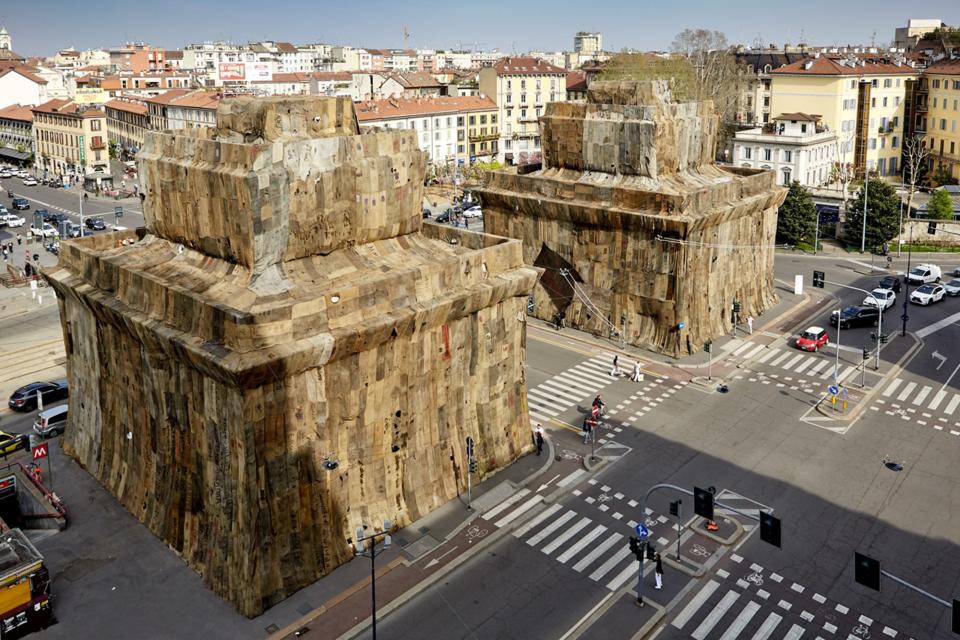
A Friend, by Ibrahim Mahama
Ibrahim Mahama’s monumental installation at Milan’s gate to the East, Porta Venezia, set the scene for this year’s Salone del Mobile. The neo-classical landmark was once part of the city’s defensive walls, which were turned into a famous promenade in the 18th century, written about by Stendhal and others (basically, Milan already boasted a High Line at a time when much of Manhattan still looked like one big Central Park). The Ghanaian artist covered the entire structure in weathered jute sacks, a crude but durable material evocative of the global flow of both goods and people, which has for so long shaped this cosmopolitan city. Its title, A Friend, is as simple as it is beautiful, and seems to speak to a potential for comfort, despite the friction and tear evident in the artwork’s material and the threshold space it occupies.

Back Home, by FENDI
A different kind of comfort was at the center of Fendi Casa’s display: the pleasant sensation of coming Back Home—home being an opulently elegant Roman villa, steeped in colors and materials echoing the 1970s. Five separate environments installed inside an old factory building—Terrace, Entrance, Waiting Room, Dressing Room and Living—showcased furniture designed by architect and interior designer Cristina Celestino, inspired by the iconic Pequin striped motif. A personal favorite was the coffee table dreamed up around the famous FF logo, reminiscent of either a rose or a giant confectionary.
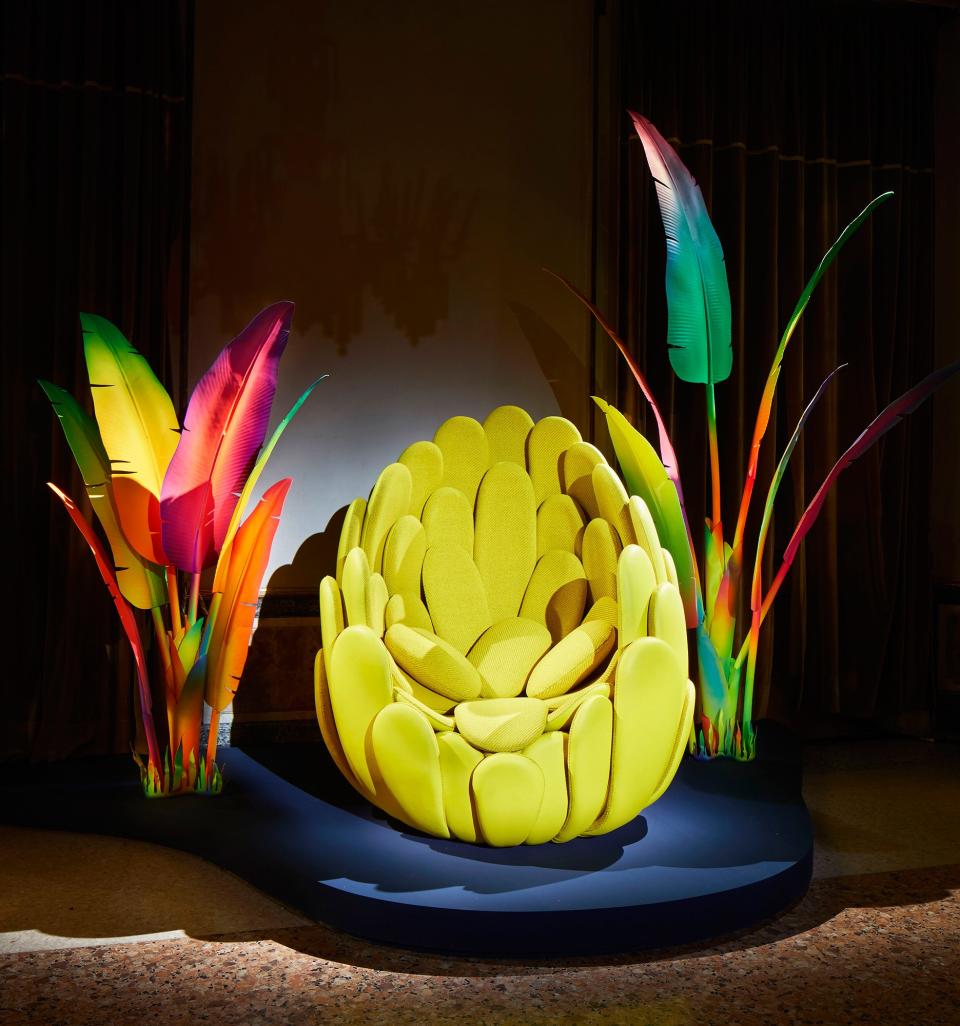
Objets Nomades, by Louis Vuitton
Long lines formed outside Palazzo Serbelloni, with visitors patiently waiting to see one of the annual highlights, Louis Vuitton’s objets nomades. After advancing into the magnificent courtyard, viewers ascended a spiraling staircase illuminated by Marcel Wander’s Venezia lanterns. When they finally made it upstairs, they were confronted with dramatically lit creations by Milanese Atelier Biagetti and the Italian duo Zanellato/Bortotto, as well as a selection of Louis Vuitton’s collaborations from years past, including the striking, petaled Bulbo, designed by the Campana Brothers.

Tod’s ‘No_Code Shelter: Stories of Contemporary Life’
Returning to the idea of comfort, Tod’s stripped the notion down to its bare essentials with its sophisticated exhibition exploring the concept of the human shelter. Together with Italian designer Andrea Caputo, Tod’s presented an inspiring series of eight types of shelters, abstracted from various prehistoric predecessors (like the conical Musgum mud huts), whose basic forms were dictated by necessity above all else.
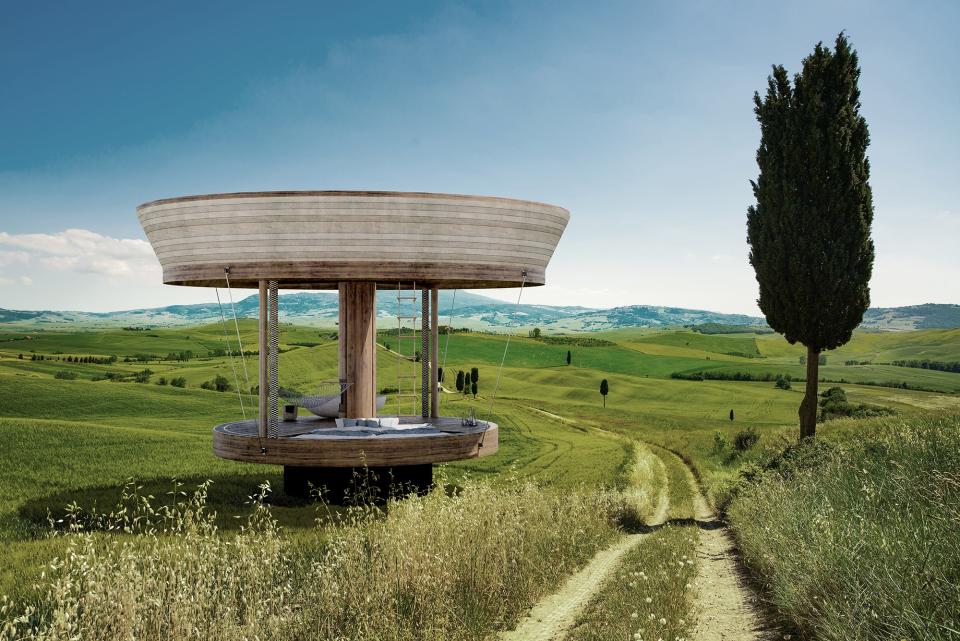
Tuscany, rural sunset landscape. Countryside farm, white road an
Casa Ojala
For a daydream-inducing contemporary version of a shelter, look no further than Casa Ojala, a concept for a transportable home designed by Italian architect Beatrice Bonzanigo of IB Studio. Despite the fact that the structure exists only as a model, its compelling design made waves at Salone. It is easy to imagine lying on the integrated floor bed of Casa Ojala and staring out onto a beautifully desolate location.
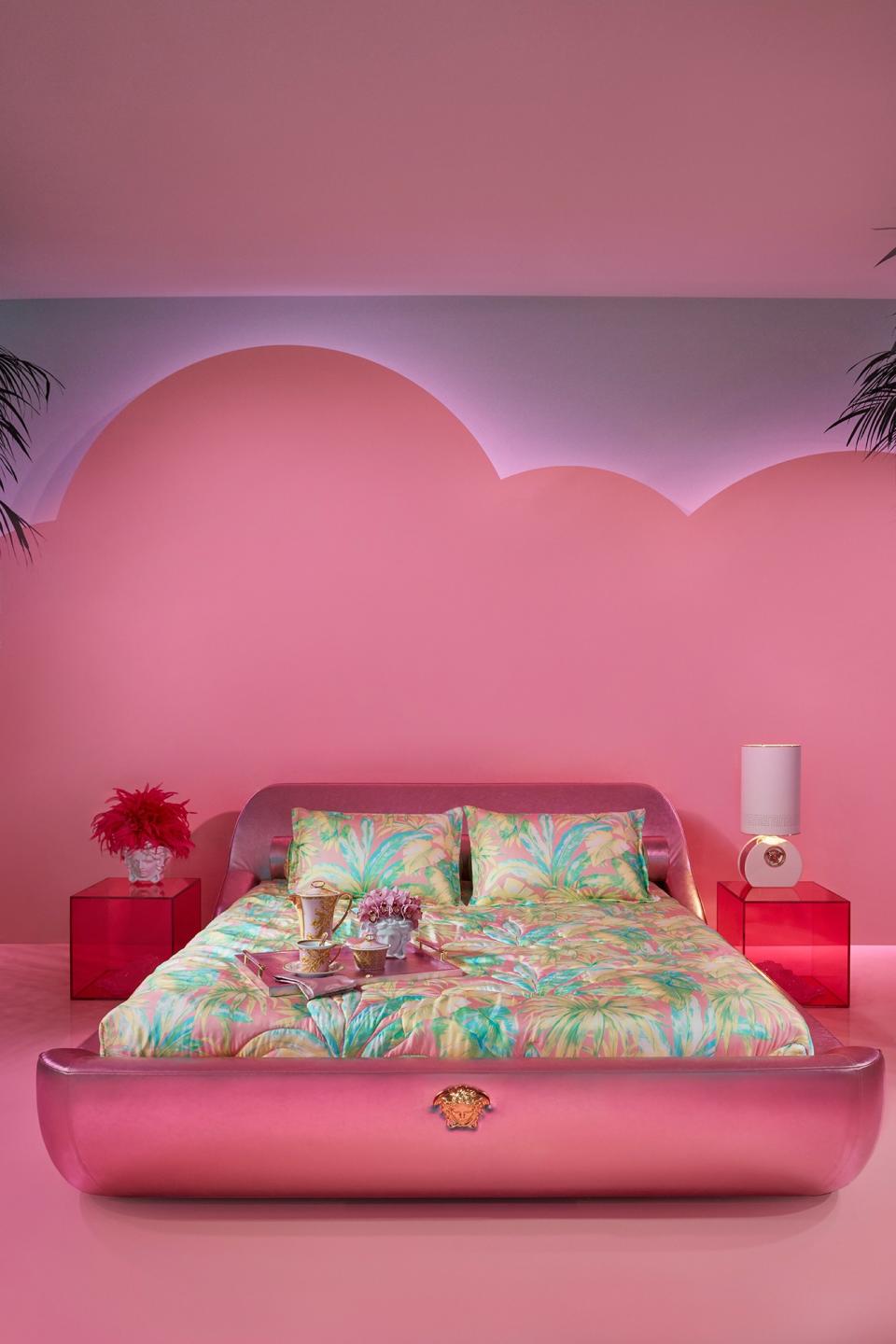
Versace Home
If a return to shelter life based on necessity is not your thing, Versace has you covered. Collaborating with interior designer Sasha Bikoff and artist Andy Dixon, the fashion house presented its 2019 Versace Home Collection in a private residence at Via Gesù. Sasha Bikoff’s Miami upbringing clearly resonated in her bold, seductive settings, which featured neon colored clouds and palm trees. Among the most striking pieces were the pink and yellow Pop Medusa Chairs made of all-weather polyethylene, with a cast of Versace’s Medusa head adorning their backs.
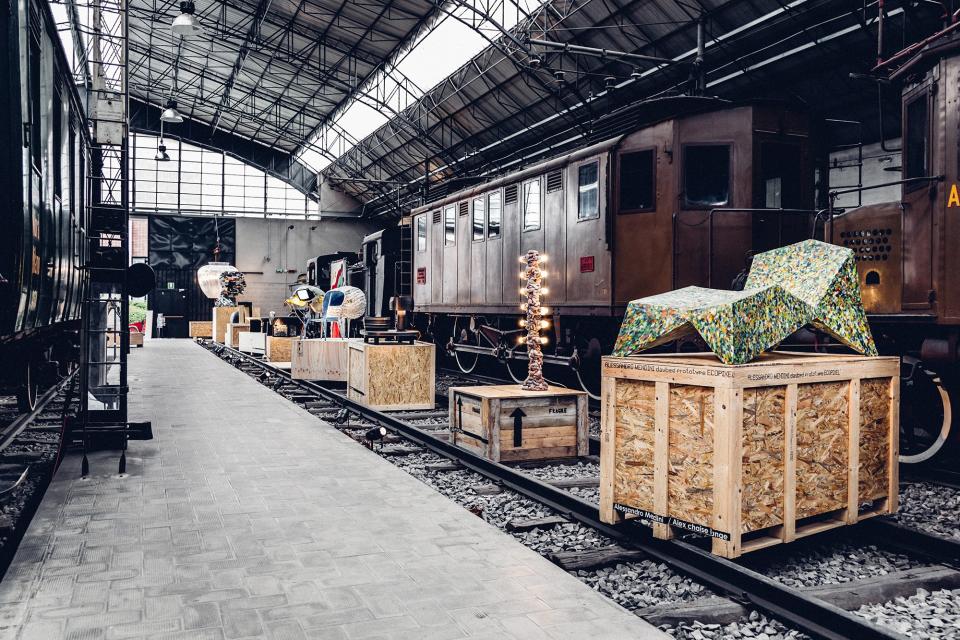
RO Plastic Master’s Pieces Exihbition
As far as unusual (if not exactly subtle) plastic chairs go, Fernando Mastrangelo’s Tombstone Chair, made entirely from recycled blue Styrofoam, might take the crown. With its artificially elongated backrest, it is, according to the designer, meant for people to sit and reflect on the scale of the plastic catastrophe. Tombstone Chair was part of the Guiltless Plastic exhibition curated by Milanese gallerist Rosanna Orlandi and staged at the Railway Pavilion of the Museo Scienza e Tecnologia. Other pieces included Patricia Urqiola’s Wasting Time Daybed, spoofing the inflated plastic soles of contemporary sneaker designs, and Massimiliano Locatelli’s version of the Breuer Chair, remade with strips of plastic bottles.
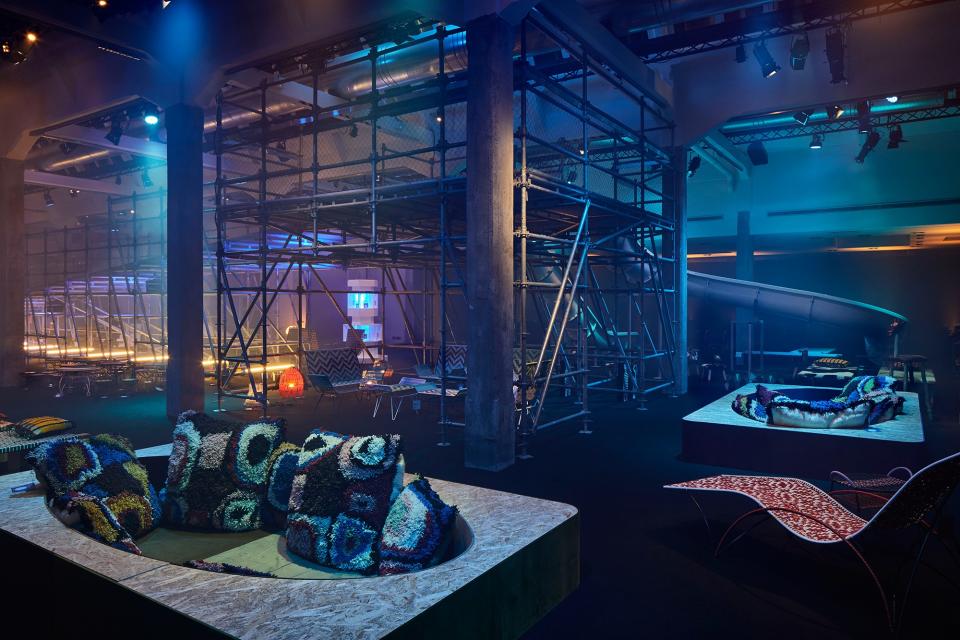
© stefanocandito.com
Marni Moon Walk
If children liked the old steam locomotives of the train pavilion, they loved the Marni Moon Walk installation, which featured a long ramp leading up to two slides inside a spacious showroom bathed in cool blue light. The setting’s successful blend of playfulness and elegance carried over into the designs of the colorful outdoor furniture on view. A plethora of gorgeous rocking chairs, sofas, and chaise longues hosted relaxed parents, waiting for their kids to return from outer space.
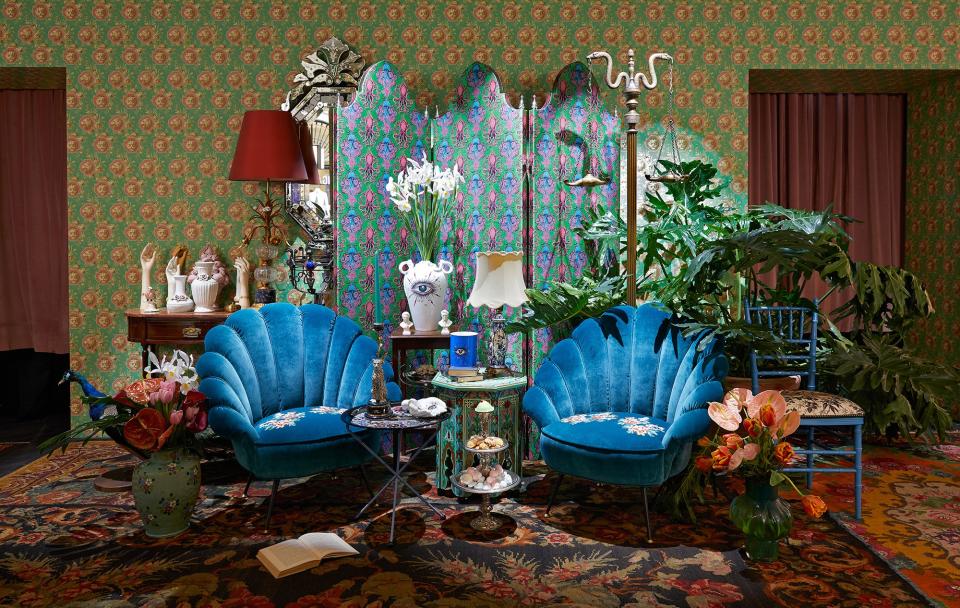
Gucci Pop-Up
Gucci’s two-story pop-up store, featuring the label’s Décor Collection, was another sight to behold. (It is, in fact, still open till June, so you have a chance to go see it for yourself.) The temporary storefront is an immersive floor-to-ceiling experience of floral-pattern silk wallpapers, embroideries, and porcelain arrangements, which often draw on the brand’s signature prints.
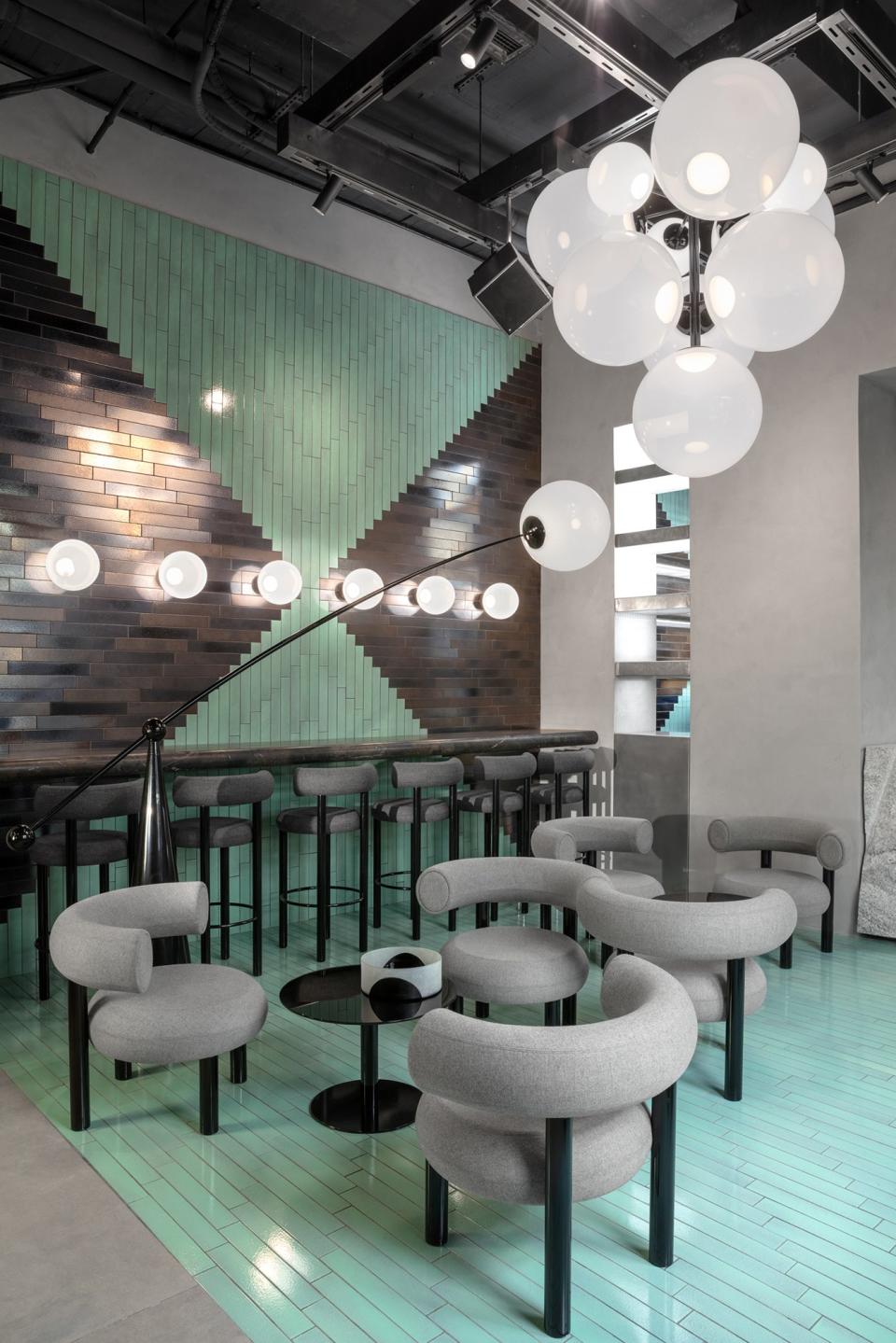
The Manzoni, by Tom Dixon
Pioneering British designer Tom Dixon decided to try a new route in presenting his collections at Salone by opening a restaurant in the heart of the city. It doubles as a showroom and allows visitors to engage with the designs in an “active setting.” The cool, winding space is part coffee bar, part exhibition space, and part dining experience. Guests eat under the smooth translucent globes of Dixon’s OPAL lights while sitting on the sleek upholstery chairs of the new FAT range.
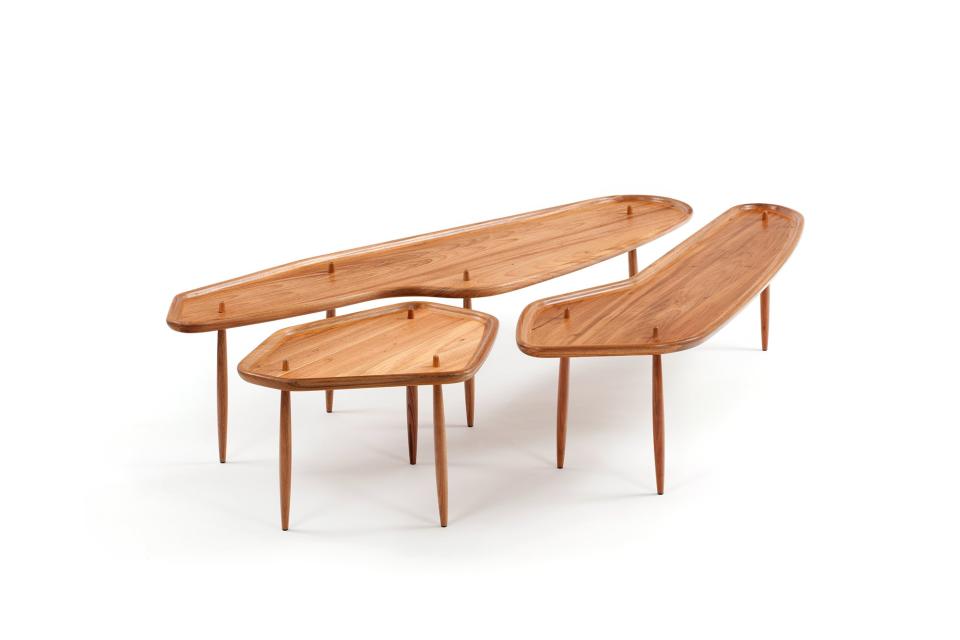
Zanine (R)evolution, presented by The Invisible Collection and ETEL
A gem for design enthusiasts was being presented at ETEL’s Milanese flagship store, where the Brazilian design house collaborated with online specialty design retailer The Invisible Collection on a showcase honoring legendary Brazilian designer José Zanine Caldas. Caldas, an autodidact, who early in his career built architectural models for Oscar Niemeyer, found success designing affordable furniture for the emerging Brazilian middle class. His preference for wood as a material was on display at ETEL’s store, where re-editions of some his iconic pieces were shown. Our favorite: the ‘mc2’ table made of smoothly curving solid wood and exemplary for Caldas’ emphasis on robust craftsmanship.

